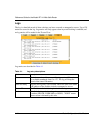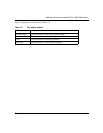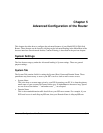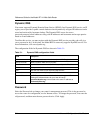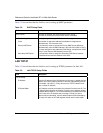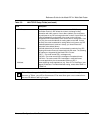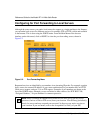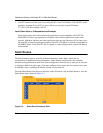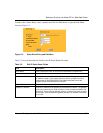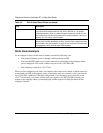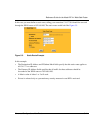
Reference Guide for the Model RP114 Web Safe Router
Advanced Configuration of the Router 5-5
RIP Direction This parameter determines how the router handles RIP (Routing
Information Protocol). RIP allows the router to exchange routing
information with other routers. If set to None (default), the router does
not participate in any RIP exchange with other routers. If set to Both, the
router broadcasts the routing table of the router on the LAN and
incorporates RIP broadcasts by other routers into its routing table. If set
to In Only, the router broadcasts its routing table on the LAN. If set to
Out Only, the router broadcasts its routing table, but it ignores any RIP
broadcast packets that it receives. Usually, you should leave this
parameter at the default (None)
.
RIP Version This field determines the format and broadcasting method of any RIP
(Routing Information Protocol) transmissions by the router. The following
RIP options are supported by the Model RP114 router:
• RIP-1—The router sends RIP-1 messages only.
• RIP-2B—The router sends RIP-2 messages in broadcast format.
• RIP-2M—The router sends RIP-2 messages in multicast format.
For most applications, the recommended version is RIP-1.
Multicast Some streaming media applications (e.g. Cisco IP/TV, RealPlayer) now
support IP Multicast. To enable Multicast routing, select either IGMP-v1
or IGMP-v2.
Note:
If you change the LAN IP address of the router while connected through the
browser or Telnet, you will be disconnected. You must then open a new connection to
the new IP address and log in again.
Table 5-3. LAN TCP/IP Setup Fields (continued)
Field Description




